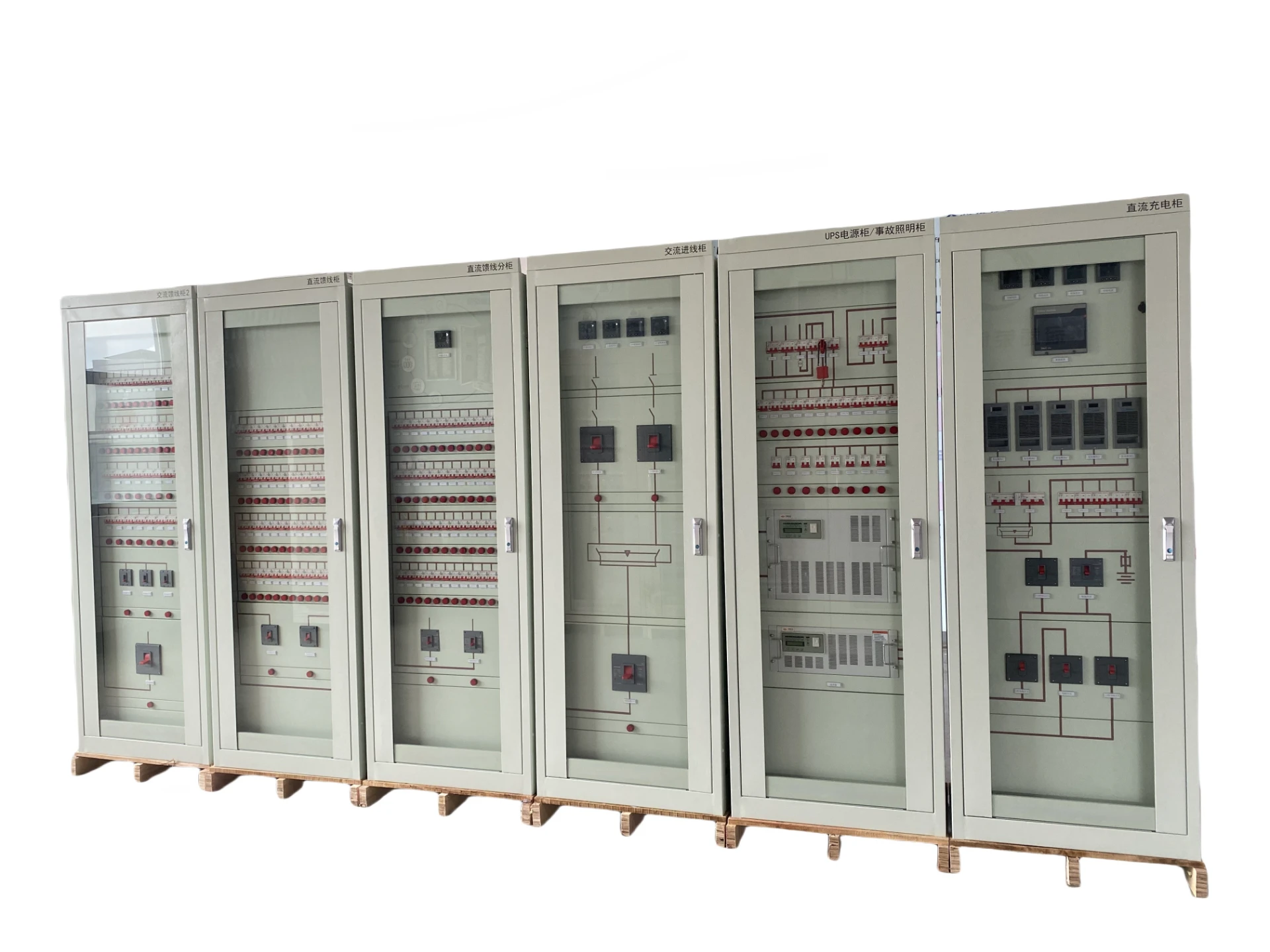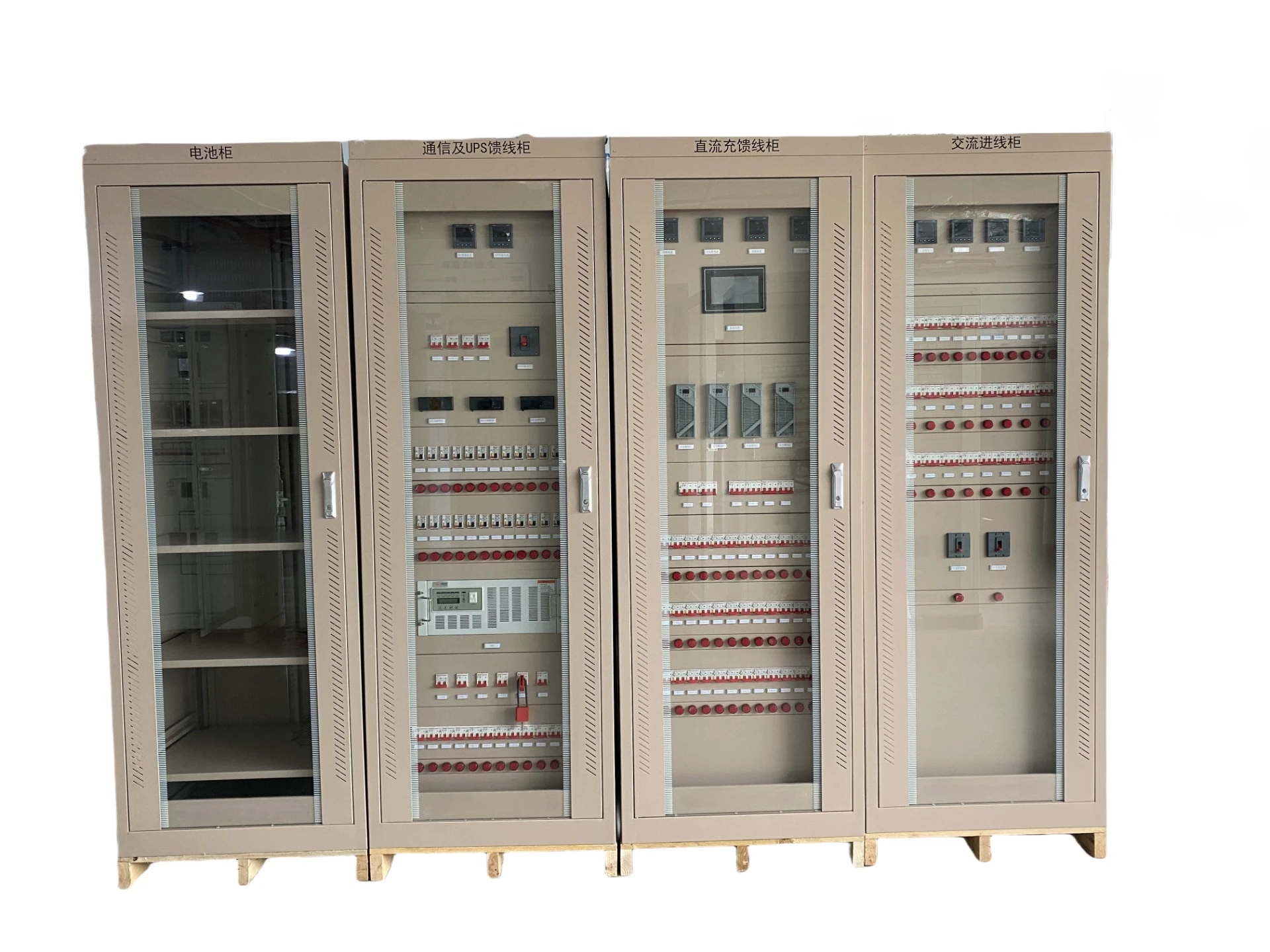
Jul . 29, 2025 19:40 Back to list
Intelligent Energy Management for Homes - Efficient Storage Solutions
As the global energy transition accelerates and industries seek to optimize efficiency, intelligent energy management (IEM) emerges as a cornerstone of modern infrastructure. This comprehensive overview analyzes market trends, technical parameters, manufacturing best practices, vendor landscape, and hands-on deployment experiences with a spotlight on Intelligent integrated power supply products.
1. Market Landscape & Industry Trends for Intelligent Energy Management
The global intelligent energy management market exceeded USD 23.1 billion in 2023 and is forecasted to achieve a CAGR of 14.6% through 2028.
The dominance of smart grids, rapid urbanization, and aggressive renewable energy penetration are key drivers. According to the International Energy Agency (IEA), over 60% of newly constructed buildings in advanced economies will integrate an intelligent energy management system (IEMS) for real-time monitoring and optimization by 2027.
Industry sectors most profoundly impacted include:
- Industrial automation & manufacturing (advanced PLC integration)
- Commercial real estate (energy dashboards, predictive load balancing)
- Home energy storage systems, supporting prosumer energy trading
- Data centers & mission-critical infrastructure (fault tolerance, redundancy control)
- Utilities managing large-scale distributed generation

Key Performance Parameter Benchmark
| Feature | Typical IEM Solution | Advanced IEM (ACDC BESS) | Home Energy Storage System | Industry Average |
|---|---|---|---|---|
| System Response Time | 120 ms | 50 ms | 80 ms | 110 ms |
| Energy Saving Rate | 13% | 19.5% | 16% | 14% |
| Battery Cycle Durability (ESS) | 6,000 cycles | 10,000 cycles | 10,500 cycles | 7,800 cycles |
| Peak Load Shaving | 2-Stage | 3-Stage Adaptive | 2-Stage | 2-Stage |
| Platform Integration | Modbus RTU | IEC61850, Modbus TCP, MQTT | Modbus TCP | Modbus RTU |
| Cybersecurity Support | Basic Firewall | IEC62443 L2 + AES-256 | AES-256 | Firewall |
2. Technical Architecture & Core Components of Intelligent Integrated Power Supply
Intelligent integrated power supply represents the synergy of advanced materials, IoT control modules, and high-reliability battery technology. Designed for intelligent energy management scenarios—including smart factories, metropolitan substations, and mission-critical water supply networks—these systems meet or surpass ISO 9001 and ANSI testing benchmarks.
- Core Materials: Premium 6005-T6 aluminum alloy enclosures (anti-corrosive), copper busbar, IEC-certified lithium iron phosphate (LiFePO4) cells, IP55 industrial-grade connectors, flame-retardant PC+ABS paneling.
- Processes: CNC machining for structural precision; automated robotic TIG welding for joints; surface anodizing (≥800h salt spray corrosion test); board-level SMT for control circuits.
- Control Intelligence: Embedded microcontroller (ARM Cortex-M7, 400MHz), real-time OS; multi-protocol gateway (IEC61850, Modbus TCP/IP), AI-empowered fault prediction; redundant HVDC-DC stages.
- Key Certifications: ISO 9001, ANSI-C37-compliant, CE, RoHS, IEC62443 cybersecurity framework.

Manufacturing Process Flow of Intelligent Integrated Power Supply
- Material Input: Selection of certified aluminum/copper/IEC cell batches with traceability.
- CNC Flashing & Shaping: Automated CNC for enclosure & busbar machining. Tolerance ±0.05mm.
- TIG Welding: Robotic precision welding for sealed contact points; leak-test verification.
- Surface Anodizing: Corrosion-resistance increased by 2.6x (salt spray test data).
- SMT: Automated pick-and-place & reflow soldering boosts reliability of control PCBs.
- Stringent Multi-point Inspection: End-to-end QA per ISO 9001/ANSI; battery cycle, BMS software, enclosure IP, electrical insulation, firmware update test.
- Validation: Simulated grid integration using IEC61850; run-time fault injection stress test.
3. Intelligent Energy Management System: Application Scenarios & Technical Advantages
- Smart Manufacturing / Industrial Automation: Adaptive load management, predictive maintenance, real-time RTU/PLC integration. Outcome: Up to 22% OPEX reduction.
- Home Energy Storage Systems (HESS): Solar PV and grid hybrid, battery capacity forecasting, smart load scheduling. Use case: Up to 5.2MWh monthly discharge in prosumer setups.
- Water Treatment Facilities: Redundant power backup for critical pumps/PLCs. Energy security exceeds 99.995% up-time.
- Petrochemical & Metallurgy Sites: Harsh environmental resistance (salinity, high temp., vibrations). Service life: 12–16 years; corrosion failure rate dramatically reduced (see chart).
Case Study: Metropolitan Subway Energy Backup (2023)
- Client: Pacific Metro Rail Co.
Configuration: 3x Intelligent integrated power supply (96V/300Ah + Modbus TCP, IEC61850) for signal & switching backup. - Operating Environment: High humidity, 53°C summer peaks, magnetic field disturbances.
- Result: 60% reduction in energy backup downtime, verified to ANSI and IEC load standards, zero-corrode case after 2 years of service. Integrated SCADA remote diagnostics; cybersecurity Layer 2 shield.
- Quote: "Zero switch-failures for 2 summers—even grid dips are handled gracefully." — Metro Energy Supervisor
4. Vendor Comparison: Leading Suppliers of Intelligent Energy Management Systems
| Vendor | Main Certifications | Battery Tech | Hybrid Cloud Support | Peak Load Control | Service Life |
|---|---|---|---|---|---|
| ACDC BESS | ISO9001, ANSI, IEC62443 | LiFePO4 10k cycles | Edge+Cloud, MQTT/REST | 3-stage Predictive | 16 Years |
| Schneider | IEC, UL | VRLA/ESS 5k cycles | Edge Analytics | 2-stage | 12 Years |
| Siemens | ISO14001, IEC, UL | LFP+NMC (mixed) | Hybrid, OPC-UA | Adaptive/2-stage | 14 Years |
| Huawei | IEC, ROHS, ISO | LiFePO4 6k cycles | Cloud API | 2-stage | 12 Years |
| SolarEdge | CE, UL | Li-ion (NMC) | REST, MQTT | 2-stage | 10 Years |
- ACDC BESS stands out with qualified certifications (ISO9001, ANSI, IEC62443) and best-in-class battery durability (LiFePO4, 10,000+ cycle rating), guaranteeing extended system reliability and lower TCO for home energy storage systems and urban deployments.
5. Customization Options and Solution Delivery
- Modular Configuration: Voltage (24–600V), Capacity (10Ah–500Ah+), Single/3-Phase, AC/DC, surge protection customizable.
- Communication Protocols: Standard Modbus TCP, IEC61850, 4G/LTE, 5G, Wi-Fi, NB-IoT (for remote/home ESS).
- Enclosure Material: Marine grade (anti-chloride) available for offshore/petrochemical use.
- Redundant Modules: Dual-controllers & self-healing bus for Tier-1 critical applications.
- ISO/ANSI Inspection Option: Custom QA test plans—insulation, full load, fire-retardant tests.
6. Major Technical Indicators – Product Data Tables
| Parameter | ACDC BESS Intelligent Integrated Power Supply | Industry Standard (Typical) |
|---|---|---|
| Nominal Voltage/Capacity | 48V/100-500Ah, 110V/50-400Ah, 220V/25-300Ah | 48–220V/50-300Ah |
| Battery Chemistry | LiFePO4 (Prismatic Grade-A, IEC62619) | VRLA/Generic LFP |
| Operating Temperature | -30°C ~ +65°C | -10°C ~ +45°C |
| Cycle Life (@80% DOD) | ≥ 10,000 cycles (12-16yrs) | 3,000–7,000 cycles |
| Enclosure | 6005-T6 Aluminum Alloy, IP55/IP66 | Steel, IP40-IP55 |
| Certifications | ISO9001, ANSI, IEC62619, IEC62443 | CE, UL |
| Communication | RS485, Modbus TCP/IP, IEC61850, MQTT | RS485/Modbus (basic) |
| BMS Protection Functions | 14+ (OCP, OVP, Temp, SOC, AFCI, Self-learning) | 7~10 |
7. Application Case: Home Energy Storage System Integration
Real-World Deployment: Smart Villa Community (2024)
- Scenario: 8-unit villa grid with rooftop solar PV, power fluctuation events (summer aircon peaks), EV charging.
- Solution: ACDC BESS home energy storage system + intelligent energy management controller with learning algorithm.
- Key Functions: Real-time load balancing, 3-tier backup, anti-islanding, remote diagnostics via MQTT cloud platform.
- Performance: Increased self-consumption rate from 41% to 79%. Zero downtime in 2023 summer storms. Data certified by 3rd-party (SGS Labs).
- Client Quote: "Load peaks fully managed, user comfort and backup confidence greatly improved."
— Community Facility Manager
8. FAQ: Professional Question & Answer Section
Frequently Asked Technical Questions
A1: LiFePO4 (Lithium Iron Phosphate) offers 2–3x higher cycle life (>10,000 cycles), lighter weight, and stronger thermal stability. VRLA (Valve-Regulated Lead Acid) is cheaper initially but prone to sulfation and faster degradation. For modern home energy storage systems and smart grids, LiFePO4 is the recommended standard.
A2: Main certifications include ISO 9001 (Quality Management), ANSI-C37 (Switchgear Safety), IEC62619 (Battery Safety), and IEC62443 (Industrial Cybersecurity). Periodic third-party audits and in-house load cycling/insulation tests are mandatory for critical environments.
A3: Typical lead-time is 30-45 days for standard models; customized solutions with special voltage, communication, or enclosure specs may require 45-60 days.
A4: Integrated control platforms automatically balance load, forecast demand, and communicate surplus generation back to the grid for time-of-use or peer-to-peer energy sales, maximizing both household autonomy and economic benefit.
A5: Over-charge/discharge, over-current, cell balancing, under/over-temp, short-circuit, SOC/SOH estimation, AFCI (arc-fault) detection, and firmware self-update mechanisms—compliant with IEC/IEEE and major grid codes.
A6: Quarterly functional test, annual IR & insulation checks, battery health scan via BMS, firmware updates (remote OTA supported), and periodic enclosure sealing inspection per ISO maintenance protocol.
A7: 24/7 remote diagnostics, phone & on-site support; standard 5-year full warranty on system, up to 12 years on LiFePO4 battery blocks. Optional AMC (Annual Maintenance Contract) covers replacement, software updates, and preventive maintenance.
9. Delivery & Service Commitment
- Delivery Period: Standard 30-45 workdays (custom 45-60 workdays)
- Warranty: 5-year system, 12-year battery (extendable)
- Technical Support: 24/7 hotline, remote cloud analysis, global field teams
- After-sales Commitment: Free commissioning, operation training, system health-check report at 6/12/24 months
- Certifications: ISO 9001, IEC, ANSI, RoHS, major national grid codes
10. References & Industry Thought Leadership
- IEA. "Digitalization and Energy", iea.org/reports/digitalisation-and-energy
- Smart Electric Power Alliance (SEPA), "Next-Gen Energy Management Systems", sepapower.org/knowledge/next-gen-ems/
- Smart Grid Observer, "Best Practices for Grid Modernization", smartgridobserver.com
- Battery University – LiFePO4 Battery Technology Review, batteryuniversity.com
- China Electrical Industry – "IEC 62443 and Cybersecurity for EMS", cec.org.cn
-
High-Performance Energy Storage System for Reliable Power Solutions
NewsJul.30,2025
-
Advanced EMS Solutions for Energy Management System & Storage Battery Companies
NewsJul.29,2025
-
Intelligent Energy Management for Homes - Efficient Storage Solutions
NewsJul.29,2025
-
High-Efficiency Energy Storage System Solutions for Reliable Power
NewsJul.29,2025
-
Smart Energy Management System EMS Solutions for OEMs
NewsJul.29,2025
-
Advanced Energy Management System EMS for OEM Solutions
NewsJul.28,2025























